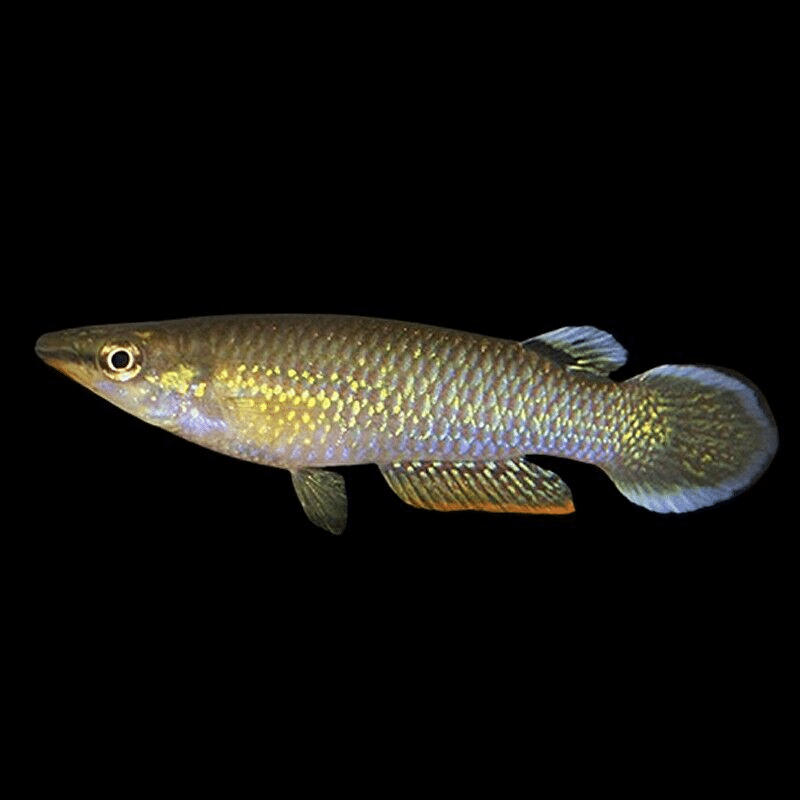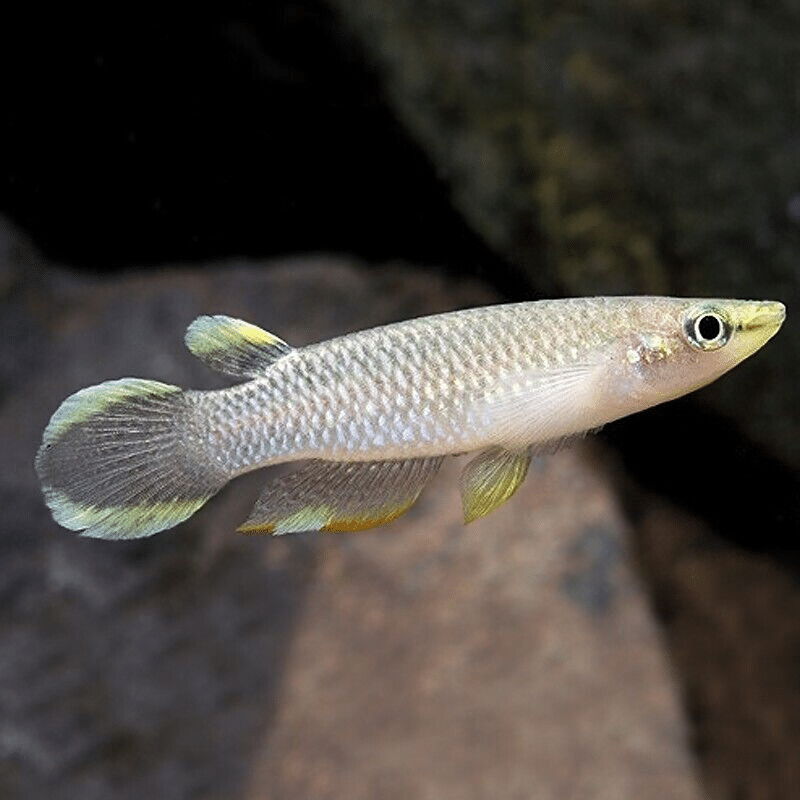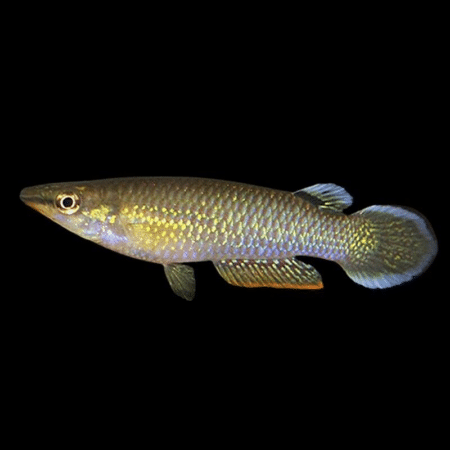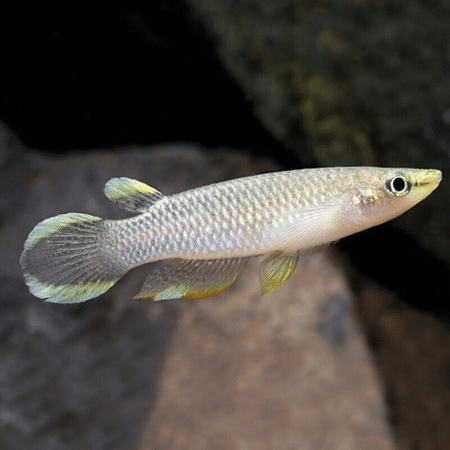Aplocheilus Panchax – Blue Panchax – Male & Female – Killifish, Easy Care Freshwater Fish for Thriving Aquariums, Perfect Companions for Community Tanks, Stunning Colors for Vibrant Aquariums
£25.49 Original price was: £25.49.£21.29Current price is: £21.29.
Welcome these beautiful Aplocheilus Panchax, known as Blue Panchax, to your aquarium. Their vibrant blue colors and graceful movements make them stunning additions. Ideal for community tanks, these peaceful killifish thrive in well-maintained freshwater environments, creating a lively aquatic display.
1001 in stock
Species Introduction
The Aplocheilus Panchax, commonly known as the Blue Panchax, is a captivating species of killifish that hails from the serene freshwater habitats of Southeast Asia. These beautiful fish are known for their vibrant colors and peaceful nature, making them an ideal choice for both novice and experienced aquarists alike. The Blue Panchax is characterized by its striking blue and yellow coloration, particularly in males, which adds a splash of vibrancy to any community tank. In their natural habitat, these fish thrive in slow-moving waters, such as streams and ponds, where they often inhabit dense vegetation and submerged structures. This natural environment not only provides them with shelter from predators but also offers ample opportunities for feeding on small invertebrates and plant matter. Understanding their natural habitat is essential for recreating a suitable aquarium environment that promotes their health and well-being.
Care Requirements Dashboard
Essential Care Guide for Your Aplocheilus Panchax
| Optimal Living Conditions | |
|---|---|
| Water Temperature | 24-27°C (75-81°F) |
| pH Level | 6.5-7.5 |
| Water Hardness | 4-12 dKH |
| Minimum Tank Size | 80L (20 gal) |
| Salinity | Freshwater |
| Care Level | Beginner Friendly |
✓ Care Level: Easy
| Parameter | Ideal Range |
|---|---|
| Tank Size | 10 gallons minimum |
| pH Level | 6.5 – 7.5 |
| Temperature | 75°F – 82°F (24°C – 28°C) |
| Hardness | 5 – 15 dGH |
Natural Behavior & Temperament
The Blue Panchax exhibits a peaceful demeanor, making it an excellent addition to community tanks. These fish are known for their active swimming patterns, often darting through the water column and exploring their surroundings. In their natural habitat, they are social creatures that thrive in groups, so it is recommended to keep them in small schools of at least five individuals to promote natural behavior and reduce stress. Their social nature encourages interaction, and they are generally non-aggressive, allowing them to coexist harmoniously with a variety of other peaceful fish species. Observing their interactions can be a delightful experience, as they display playful behaviors, such as chasing each other and establishing a hierarchy within the group. However, it is essential to monitor their interactions with other tank mates to ensure that all fish feel secure and comfortable in their environment.
Tank Setup Guide
Creating an ideal environment for your Blue Panchax involves replicating their natural habitat as closely as possible. Start with a tank size of at least 10 gallons, as this provides ample swimming space and reduces stress levels. The substrate should consist of fine gravel or sand, which mimics the riverbeds they are accustomed to. Incorporate plenty of live plants, such as Java fern or Anubias, to create hiding spots and provide cover. Floating plants can also be beneficial, as they diffuse light and create shaded areas that mimic their natural environment. Additionally, include driftwood and rocks to enhance the aesthetic appeal and provide additional hiding places. Ensure that the tank has a gentle filtration system, as Blue Panchax prefer calm waters. Regular water changes and maintenance are crucial to maintaining optimal water quality, which is vital for the health of these beautiful fish.
Water Quality Management
Maintaining proper water quality is critical for the health and longevity of your Blue Panchax. The ideal pH level for these fish ranges from 6.5 to 7.5, with a temperature between 75°F to 82°F (24°C to 28°C). Regularly test the water parameters using a reliable aquarium test kit to ensure that they remain within the recommended ranges. Additionally, the hardness of the water should be maintained between 5 and 15 dGH, as this mimics their natural habitat and supports their overall health. Ammonia and nitrite levels should always be at zero, while nitrate levels should be kept below 20 ppm. To achieve this, perform regular water changes of 10-20% weekly and utilize a quality filtration system. Monitoring these parameters will help prevent stress and illness, ensuring that your Blue Panchax thrive in their aquatic home.
Feeding & Nutrition
Feeding your Blue Panchax a well-balanced diet is essential for their health and vibrant coloration. In the wild, these fish primarily consume small invertebrates, insects, and plant matter. In an aquarium setting, they thrive on high-quality flake foods, micro-pellets, and frozen or live foods such as brine shrimp, daphnia, and bloodworms. It is recommended to feed them small portions 2-3 times a day, ensuring that they consume all food within a few minutes to prevent water quality issues. A varied diet not only enhances their coloration but also supports their overall health and vitality. Additionally, incorporating plant-based foods, such as spirulina flakes, can provide essential nutrients and promote digestive health. Always monitor their feeding habits and adjust portions as needed to maintain a healthy weight and prevent overfeeding.
Compatibility Guide
✓ Peaceful Tank Mates
| Fish Species | Compatibility |
|---|---|
| Neon Tetra | Excellent |
| Guppy | Good |
| Corydoras Catfish | Good |
| Zebra Danio | Excellent |
| Betta Fish | Not Recommended |
When selecting tank mates for your Blue Panchax, it is essential to choose species that share similar water parameters and temperaments. They thrive in community tanks with other peaceful fish, such as Neon Tetras, Guppies, and Corydoras Catfish. However, it is crucial to avoid aggressive species like Betta fish, as they may stress or harm your Blue Panchax. Additionally, larger predatory fish should be avoided, as they may view the Blue Panchax as potential prey. By carefully selecting compatible tank mates, you can create a harmonious community that allows all fish to thrive.
Health & Wellness
Maintaining the health and wellness of your Blue Panchax is vital for their longevity and happiness. Regular monitoring of water parameters, such as pH, ammonia, and nitrate levels, is essential to prevent stress and disease. Common health issues that may affect Blue Panchax include ich, fin rot, and swim bladder disorders. Signs of illness may include lethargy, loss of appetite, or abnormal swimming behavior. If any of these symptoms are observed, it is crucial to take immediate action by isolating the affected fish and treating the tank with appropriate medications. Preventative measures, such as maintaining optimal water quality, providing a balanced diet, and avoiding overcrowding, can significantly reduce the risk of health issues. Regularly observe your fish for any changes in behavior or appearance, as early detection is key to successful treatment.
Breeding Information
Breeding Blue Panchax can be a rewarding experience for aquarists willing to provide the right conditions. These fish are egg scatterers, meaning they do not exhibit parental care after spawning. To encourage breeding, it is recommended to set up a separate breeding tank with soft, slightly acidic water and plenty of fine-leaved plants, such as Java moss, where the females can lay their eggs. The ideal temperature for breeding is around 78°F (25°C). Once the female is ready to spawn, she will lay eggs among the plants, and the male will fertilize them. After spawning, it is crucial to remove the adult fish from the breeding tank, as they may eat the eggs or fry. The eggs will hatch within 7-10 days, depending on the water temperature. Once the fry are free-swimming, they can be fed infusoria or finely crushed flake food until they are large enough to consume larger foods. Providing a stable environment and proper nutrition during this critical stage will ensure the healthy growth of the fry.
Acclimation Process
Acclimating your Blue Panchax to their new environment is a crucial step that should not be overlooked. To minimize stress, it is recommended to use the drip acclimation method. Start by floating the sealed bag containing the fish in the aquarium for about 15-20 minutes to equalize the temperature. After that, slowly introduce small amounts of tank water into the bag every 5-10 minutes, allowing the fish to adjust to the new water parameters gradually. This process should take about an hour. Once the acclimation is complete, gently transfer the fish into the tank using a net, avoiding adding the water from the bag to the aquarium. This method helps ensure a smooth transition and reduces the risk of shock or stress, allowing your Blue Panchax to thrive in their new home.
Long-term Care
Caring for your Blue Panchax over the long term involves regular maintenance and monitoring of their environment. These fish typically live for 3-5 years in a well-maintained aquarium. To ensure their longevity, it is essential to provide a stable environment with consistent water parameters and regular water changes. Monitor their diet and feeding habits to prevent overfeeding and maintain a healthy weight. Additionally, keep an eye on their social interactions to ensure they remain stress-free and happy. Regularly observe their behavior and appearance for any signs of illness or distress. By prioritizing their care and well-being, you can enjoy the beauty and companionship of your Blue Panchax for many years to come.
Natural Habitat Recreation
Recreating the natural habitat of the Blue Panchax in your aquarium is essential for their overall health and happiness. These fish thrive in environments that mimic their native freshwater habitats, which typically include slow-moving waters with plenty of vegetation. To achieve this, consider incorporating live plants, such as floating plants and dense foliage, which provide shelter and mimic their natural surroundings. Additionally, adding driftwood and rocks can create hiding spots and territories for the fish. The use of a gentle filtration system will help maintain water quality while ensuring that the water flow remains calm, as Blue Panchax prefer quieter waters. By thoughtfully designing their habitat, you can create a thriving environment that enhances their natural behaviors and promotes their well-being.
Seasonal Care Adjustments
As seasons change, it is essential to adjust the care routine for your Blue Panchax to ensure their continued health and comfort. During warmer months, monitor the water temperature closely, as higher temperatures can lead to decreased oxygen levels and increased stress. Ensure that the tank is well-aerated and consider using a fan or air conditioning to maintain optimal conditions. In cooler months, be mindful of temperature fluctuations and provide a heater if necessary to maintain a stable environment. Additionally, adjust the lighting duration to mimic natural daylight cycles, as this can influence their breeding behavior and overall well-being. By being proactive and responsive to seasonal changes, you can help your Blue Panchax thrive throughout the year.
Expert Tips
✓ Professional Advice
- Consider keeping a small school of Blue Panchax to encourage natural behaviors and reduce stress.
- Regularly test water parameters and perform maintenance to prevent health issues.
- Provide a varied diet to enhance coloration and overall health.
- Observe their social interactions and ensure compatibility with tank mates.
- Be patient during the acclimation process to minimize stress.
Troubleshooting
In the event of issues arising with your Blue Panchax, it is essential to approach troubleshooting methodically. If you notice signs of illness, such as lethargy or abnormal swimming behavior, first check the water parameters to ensure they are within the recommended ranges. If the water quality is poor, perform a partial water change and address any underlying issues. If you observe aggression or bullying among the fish, consider increasing the number of individuals in the tank to distribute aggression and provide more hiding spots. In cases of disease, isolate affected fish and treat them accordingly while maintaining the health of the rest of the tank. By being observant and proactive, you can effectively troubleshoot common issues and ensure the well-being of your Blue Panchax.
Scientific Background
The Aplocheilus Panchax belongs to the family Aplocheilidae, which encompasses a diverse group of small freshwater fish known as killifish. These fish are characterized by their vibrant colors and unique breeding behaviors. While specific scientific data on the family and species may be limited, research indicates that killifish play an essential role in their ecosystems, contributing to the balance of aquatic life. Conservation efforts are crucial to preserving their natural habitats, as many species face threats from habitat destruction and pollution. Understanding the scientific background of the Blue Panchax helps aquarists appreciate their ecological significance and the importance of responsible fishkeeping practices.
Advanced Care Techniques
For experienced aquarists looking to elevate their care for Blue Panchax, consider implementing advanced techniques to enhance their environment and health. One approach is to create a biotope aquarium that closely resembles their natural habitat, incorporating specific plant species and substrate types. Additionally, utilizing a high-quality filtration system with adjustable flow rates can help maintain optimal water quality while catering to the Blue Panchax’s preference for calm waters. Regularly engaging in breeding practices can also provide valuable insights into their reproductive behaviors and contribute to the conservation of this beautiful species. By employing these advanced techniques, you can ensure that your Blue Panchax thrive and flourish in a well-maintained aquarium.
Frequently Asked Questions
Q: What tank size is required for Aplocheilus Panchax?
Aplocheilus Panchax, commonly known as Blue Panchax, thrive best in a tank of at least 60 litres (15 gallons). This size accommodates their active nature and allows for adequate swimming space. A larger tank can help maintain stable water parameters, which is crucial for their health. It is advisable to provide a well-planted environment with open swimming areas, as these fish enjoy exploring their surroundings. Additionally, ensure that the tank is securely covered, as they are known to jump. A well-maintained tank with proper filtration will also support their well-being, making it a lovely habitat for these vibrant aquatic companions.
✓ Expert Tip
Consider adding floating plants to provide shade and reduce light intensity, which helps create a comfortable environment for your Blue Panchax.
Q: What water parameters do Aplocheilus Panchax require?
Aplocheilus Panchax prefer slightly acidic to neutral water conditions, with a pH range of 6.5 to 7.5. The water hardness should be moderately soft to hard, ideally between 5 to 15 dGH. Temperature is crucial; maintain it between 22°C and 28°C (72°F to 82°F) for optimal health. Regular water changes of about 25% weekly will help keep the water quality high, reducing toxins and promoting a thriving aquatic environment. Monitoring ammonia and nitrite levels is essential, as these should be kept at 0 ppm. Regular testing will ensure a stable habitat for your fish friends.
✓ Expert Tip
Utilise a good quality water conditioner to remove chlorine and chloramine from tap water before adding it to the aquarium.
Q: How often should I feed Aplocheilus Panchax?
Aplocheilus Panchax should be fed small amounts two to three times a day. A varied diet is essential for their health; offer high-quality flake food, micro-pellets, and occasional live or frozen foods like brine shrimp or daphnia. Be cautious not to overfeed, as this can lead to poor water quality and health issues. Providing food in amounts that can be consumed within a few minutes will help maintain a clean tank. Additionally, watch for any uneaten food to prevent it from decomposing and affecting water quality.
✓ Expert Tip
Consider incorporating vegetable-based foods occasionally to provide essential nutrients and promote digestive health.
Q: What are the best tank mates for Aplocheilus Panchax?
When selecting tank mates for Aplocheilus Panchax, opt for peaceful community fish. They pair well with small tetras, rasboras, and other non-aggressive species. Avoid larger or aggressive fish that may intimidate or harm them. Blue Panchax are known to be social and thrive in groups, so keeping them in schools of at least five or six is beneficial. Additionally, ensure that all species share similar water parameters to reduce stress and promote harmony in the tank.
✓ Expert Tip
Introduce new fish gradually to minimise stress and monitor interactions closely for the first few days.
Q: How do I properly acclimatise Aplocheilus Panchax to my aquarium?
Acclimatising Aplocheilus Panchax is essential to ensure a smooth transition to their new environment. Begin by floating the sealed bag in the aquarium for about 15-20 minutes to equalise the temperature. After this, gradually introduce small amounts of aquarium water into the bag every 5-10 minutes for about an hour. This process dilutes the bag water with your aquarium water, reducing shock. Finally, gently net the fish into the tank, discarding the bag water to prevent introducing any potential contaminants. This careful acclimatisation helps promote their health and reduces stress.
✓ Expert Tip
Consider dimming the lights during the acclimatisation period to create a calmer environment for your new fish friends.
Q: What are the signs of healthy Aplocheilus Panchax?
Healthy Aplocheilus Panchax exhibit vibrant colours, clear eyes, and active behaviour. They should swim freely and confidently, displaying curiosity about their environment. Look for signs of good appetite, as they should readily accept food without hesitation. Observe their fins for any signs of damage or fraying, and ensure their scales are intact without any lesions. Additionally, healthy fish will not display excessive hiding or lethargy. Regular monitoring of their behaviour and physical condition will help you maintain their health and well-being.
✓ Expert Tip
Keep a close eye on any changes in behaviour, as this may indicate underlying health issues needing prompt attention.
Q: How do I successfully breed Aplocheilus Panchax?
Breeding Aplocheilus Panchax can be an exciting venture. To encourage breeding, provide a separate breeding tank with soft, slightly acidic water and plenty of fine-leaved plants for egg deposition. Introduce a ratio of one male to two or three females to increase the chances of successful spawning. Once the females are ready, they will lay eggs, which should be removed after a few hours to prevent predation by adults. The eggs will hatch within a week at optimal temperatures. Ensure to feed the fry with finely crushed flake food or specialised fry food to promote healthy growth.
✓ Expert Tip
Maintain stable water conditions and keep the breeding tank clean to ensure the best chances of fry survival.
Q: What temperature should I maintain for Aplocheilus Panchax?
Aplocheilus Panchax thrive best in a temperature range of 22°C to 28°C (72°F to 82°F). Maintaining a stable temperature within this range is crucial for their overall health and activity levels. Fluctuations in temperature can lead to stress and susceptibility to diseases. Investing in a reliable aquarium heater and thermometer will help you monitor and maintain consistent temperatures. Regularly check your heater for functionality and adjust as necessary to keep your fish friends comfortable.
✓ Expert Tip
Consider using a heater guard to prevent accidental burns and injuries to your fish.
Q: How long do Aplocheilus Panchax typically live in captivity?
In captivity, Aplocheilus Panchax can live up to 3 to 5 years, depending on their care and environmental conditions. Providing optimal water quality, a balanced diet, and a stress-free environment will contribute to their longevity. Regular monitoring for signs of illness and maintaining good tank hygiene will also enhance their lifespan. Remember that individual fish may vary, and some may live longer with exceptional care. With the right setup and attention, you can enjoy the company of these lovely fish for several years.
✓ Expert Tip
Keep a journal of your fish’s health and tank conditions, as this can help you spot trends and make necessary adjustments.
Q: What type of substrate is most suitable for Aplocheilus Panchax?
For Aplocheilus Panchax, a fine sand or smooth gravel substrate is ideal. These substrates not only provide a comfortable environment for the fish but also mimic their natural habitat. Avoid sharp-edged substrates, as these can injure their delicate fins. Additionally, a well-planted tank with hiding spots will help the fish feel secure, promoting natural behaviour. Regular vacuuming of the substrate during water changes will maintain cleanliness and prevent the build-up of harmful waste.
✓ Expert Tip
Consider adding leaf litter or driftwood to enhance the aesthetics and provide natural hiding spots for your fish.
Q: What behavioural patterns should I expect from Aplocheilus Panchax?
Aplocheilus Panchax are generally active and social fish, often seen swimming in the upper levels of the aquarium. They exhibit playful behaviour and enjoy exploring their surroundings. These fish are known to be curious and will often investigate new objects or changes in their environment. They can be territorial, particularly during breeding, so providing ample space and hiding spots is crucial. Observing their interactions with each other and their environment will enhance your understanding of their behaviour and social dynamics.
✓ Expert Tip
Introduce objects or decorations gradually to avoid overwhelming your fish friends and to allow them to adapt comfortably.
Q: How can I prevent common diseases in Aplocheilus Panchax?
Preventing diseases in Aplocheilus Panchax involves maintaining high water quality and a stable environment. Regular water changes and tank cleaning are vital to remove toxins and waste. Quarantine new fish before introducing them to your main tank to prevent the spread of diseases. Additionally, avoid overfeeding, as this can lead to poor water quality and stress. Ensure your fish are not overcrowded, as this can contribute to stress and aggression. Monitoring your fish closely for any signs of illness will enable early intervention, ensuring their health and well-being.
✓ Expert Tip
Consider adding aquarium salt in moderation to help reduce stress and improve gill function during times of stress.
Q: What lighting conditions do Aplocheilus Panchax prefer?
Aplocheilus Panchax thrive in moderate lighting conditions. Too much light can cause stress and encourage algae growth, so it is advisable to provide shaded areas using floating plants or decorations. A light cycle of 10-12 hours a day is generally suitable, mimicking their natural habitat. Adjust the lighting intensity based on the tank’s plant life, as some plants may require more light. Regularly check for algae blooms and adjust the lighting or introduce algae eaters if necessary.
✓ Expert Tip
Utilise a timer for your lighting system to ensure consistency and mimic natural day-night cycles.
Q: How do I recognise stress in Aplocheilus Panchax?
Recognising stress in Aplocheilus Panchax is crucial for their well-being. Signs of stress may include excessive hiding, erratic swimming patterns, or a lack of appetite. Additionally, you may notice clamped fins or faded colours. If your fish are frequently darting around or displaying aggressive behaviour towards tank mates, this may also indicate stress. Ensuring a peaceful environment with adequate space and hiding spots will help reduce stress levels. Regular observation of your fish will enable you to spot any changes in behaviour that may signal stress.
✓ Expert Tip
Provide visual barriers, such as plants or decorations, to help reduce aggression and create a more comfortable environment for your fish friends.
Q: What natural habitat conditions should I replicate for Aplocheilus Panchax?
To replicate the natural habitat of Aplocheilus Panchax, aim for a densely planted tank with plenty of open swimming space. These fish are typically found in slow-moving waters with vegetation, so incorporating live plants, driftwood, and rocks will create a comfortable environment. Maintain slightly acidic to neutral water conditions and provide shaded areas to mimic their natural surroundings. Additionally, soft substrates can help replicate the riverbeds they inhabit. Regular maintenance and monitoring of water quality will ensure a thriving habitat for your beautiful aquatic companions.
✓ Expert Tip
Incorporate floating plants to provide shade and reduce light intensity, creating a more secure environment for your fish.

















Emily Carter (verified owner) –
I recently added a pair of Aplocheilus Panchax, the Blue Panchax, to my 20-gallon freshwater setup, and I couldn’t be happier! These little killifish are not only stunning with their iridescent blue and gold hues, but they also have such vibrant personalities. After about three weeks in my tank, they’ve settled in beautifully and are always exploring or darting around, which adds so much life to the aquarium.
Compared to other tropical fish I’ve kept, the Blue Panchax is notably more active and curious, often interacting with their surroundings. They thrive in a well-planted tank with plenty of hiding spots, which I recommend for anyone considering these beauties.
One minor concern was their initial shyness; they took a few days to come out fully, but patience pays off! I found they respond well to a varied diet, so I’ve been feeding them high-quality flakes and live food which they absolutely love.
I highly recommend these fish for anyone with a bit of experience in keeping freshwater fish; they really are a joy to watch. I’ll definitely be getting more in the future!
Emily Carter (verified owner) –
I recently added a pair of Blue Panchax to my 30-gallon community aquarium, and I can’t express how thrilled I am! These beautiful killifish have been thriving for about two months now and have quickly become the stars of the tank. Their vibrant blue coloration contrasts beautifully with my guppies and tetras, and they have such lively personalities.
I appreciate how easy they are to care for, making them perfect for any hobbyist, whether you’re a newbie or have been in the game for years. They swim gracefully and are very active, which keeps my tank dynamic and engaging.
One thing I found particularly charming is how they interact with each other, often darting around playfully. Just a minor note: they can be a bit shy at first, so I recommend providing plenty of hiding spots with plants or decorations.
Compared to other killifish I’ve kept, the Blue Panchax are more resilient and seem to adapt well to tank conditions. If you’re looking for vibrant, easy-care freshwater fish for your community tank, I wholeheartedly recommend these lovely little guys. They’ve truly brought my aquarium to life!